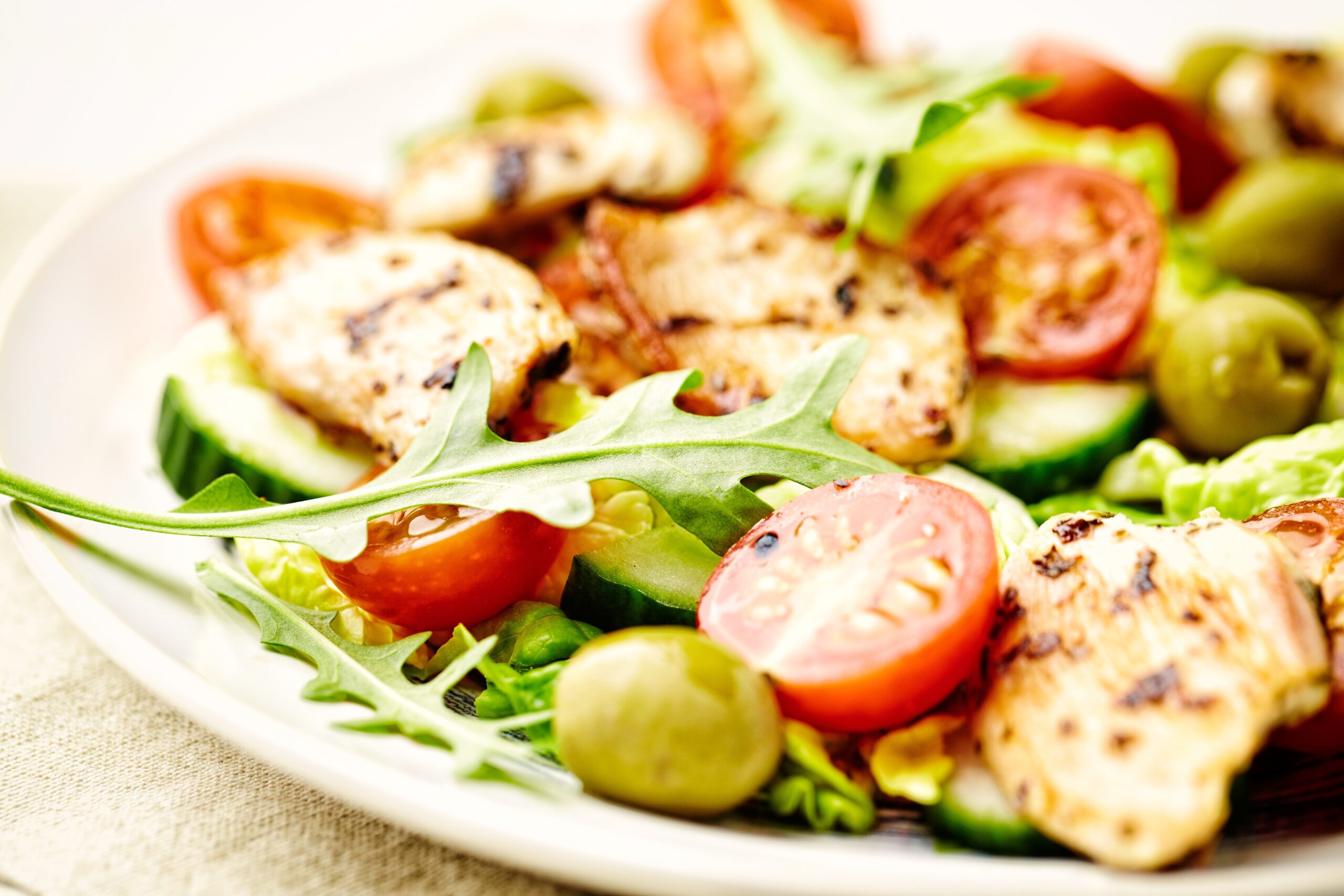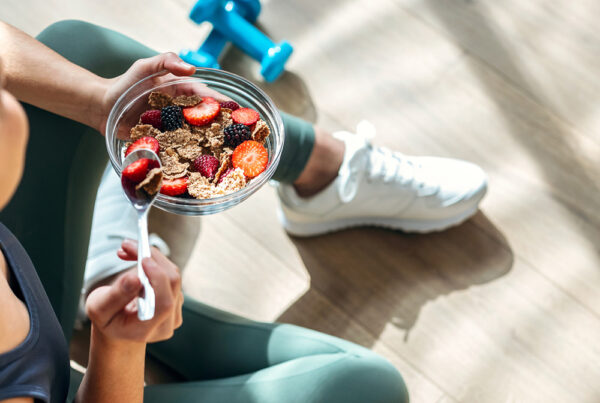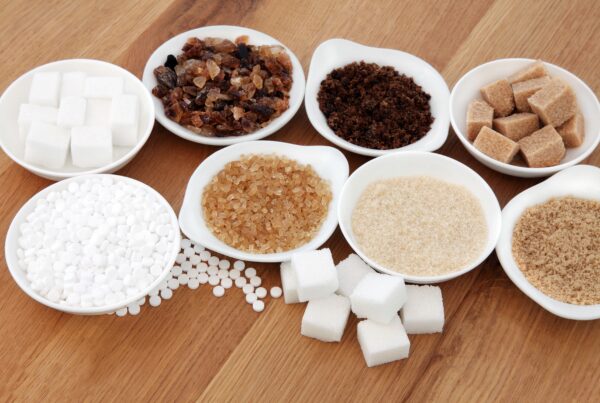
With so many fad diets making the rounds these days, it can be difficult to find a legitimate eating plan that will actually help you lose weight and get healthy.
Here’s a list of 2017’s most popular diets, including their pros and cons.
THE MEDITERRANEAN DIET
Overall diet ranking according to U.S. News & World Report: 4.1 out of 5
High in fruits, veggies, fish, whole grains, beans, nuts, legumes, and olive oil, the Mediterranean Diet was named by U.S. News & World Report as the best plant-based diet. It’s modeled after foods found in areas along the Mediterranean Sea.
What To Eat
- Plant-based foods like fruits and vegetables
- Healthy fats such as olive oil
- Use herbs and spices instead of salt to flavor foods
- Fish and poultry at least twice a week
- Instead of eating meat for protein for every meal, substitute nuts, beans, legumes and seeds
- Whole grains, including brown rice, whole wheat pastas and quinoa
- Minimally processed cheese and yogurt in smaller portions
What To Avoid
- Red meats (no more than a few times per month)
- Butter, margarine and other foods higher in trans fats
- Sugary foods, including soft drinks and fruit juices
- Foods with added sugars such as ice cream, candy, chocolate and fruit snacks
- Refined grains like white bread, all-purpose flower, refined wheat pastas
- Processed meats, including hot dogs and sausages
- Processed snack foods like chips, pretzel mixes, cookies and cakes
The Pros
- Can cause weight loss
- Good for heart health
- Helps lower your cholesterol
- Can prevent cardiovascular disease and cancer
The Cons
- Potentially expenses at grocery stores
- Responsibility of creating your own weight-loss plan
- Can be time consuming to cook all of your meals
- More difficult to find options at restaurants
Where To Start
Authority Nutrition has a helpful article on the Mediterranean Diet including a full list of foods to eat and avoid, sample menus and links to recipes. You can find that, HERE.
THE NORDIC DIET
Our overall diet ranking: 3.7 out of 5.
Similar to the Mediterranean Diet, the Nordic Diet promotes less sugar and saturated fat, and more whole, fresh foods. Its components are based on the traditional eating style of people in the Nordic countries.
What To Eat
- Root vegetables such as onion, leek, turnip, carrot, parsnip, beetroot and potatoes (boiled, not fried)
- Berries, apples, pears and prunes
- Cruciferous vegetables, including cabbage, cauliflower, Brussels sprouts, broccoli, spinach and kale
- Fish, particularly fatty fish like Herring, Baltic herring, mackerel, salmon and white fish, at least twice a week
- Nuts, beans, legumes and seeds
- Whole grains, specifically rye, wheat, barley and oats
- Minimally processed cheese and yogurt, eaten in moderation and smaller portions
- For cooking, use canola oil rather than olive oil
What To Avoid
- Red meats, poultry and game meats (no more than a few times per month)
- Butter, margarine, processed vegetable oils and other fats higher in trans fats
- Foods that are fried
- Foods with added sugars such as ice cream, candy, soft drinks and fruit snacks
- Refined grains like white bread, all-purpose flower, refined wheat pastas
- Processed meats, including hot dogs and sausages
- Processed snack foods like chips, pretzel mixes, cookies and cakes
The Pros
- Can cause weight loss
- Lowers blood pressure
- Decreases inflammation and pain
- Lowers cholesterol
The Cons
- May be more of a challenge to eat diverse meals
- Responsibility of creating your own weight-loss plan
- Those who eat less vegetables and more fast foods may struggle when switching to this diet
- May be more challenging to find meals at restaurants
Where To Start
The Daily Burn has nine delicious and healthy recipes to get you started on the Nordic Diet.
THE DASH DIET
Overall U.S. News & Reports ranking: 4.2 out of 5.
Named the best overall diet for seven years in a row, the DASH Diet focuses on preventing and reversing high blood pressure by lowering your sodium intake.
What To Eat
- Vegetables and fruit (add one more serving to every meal than you would normally consume)
- Low-fat and nonfat dairy
- Beans and nuts
- Whole grains like brown rice, whole wheat pastas, quinoa, buckwheat and spelt
- Lean meats such as poultry and fish
- Healthy fats and oils, including olive oil, canola oil, avocado oil and almond oil
What To Avoid
- Fatty meats such as pork and game meat
- Full-fat dairy products
- Sugar-sweetened beverages
- Foods with added sugars such as ice cream, candy, soft drinks and fruit snacks
- Foods high in sodium, such as potato chips, canned soups and products, and fast food
The Pros
- Can cause weight loss
- Can significantly lower blood pressure
- Lowers cholesterol
- Lowers the risk of heart disease
- Easier to adapt than other diets
The Cons
- Some people may experience difficulties when consuming more fiber
- Responsibility of creating your own weight-loss plan
- Because the diet is less strict, it can be easier to fall into old eating habits
Where To Start
The U.S. Department of Health and Human Sciences has a helpful 20-page guide on lowering blood pressure through the DASH Diet. It includes a detailed description of how much of each food you should eat, as well as sample recipes for meal planning.
ORNISH DIET
Overall U.S. News & Reports ranking: 3.7 out of 5.
Great for heart health, the Ornish Diet was developed by Dr. Dean Ornish. It considers food on a spectrum, with healthy items at one end and unhealthy (more processed) items at the other.
This diet focuses on whole grains, fruits, vegetables, and healthy fats. The great thing about the program is that you can choose how restrictive you want to be with it.
What To Eat
- An unlimited amount of vegetables, fruit, beans, nuts and legumes
- Low-fat or nonfat dairy in moderation
- Small, frequent meals throughout the day rather than three large meals
What To Avoid
- Red meats and animal products
- Deep-fried foods
- Sources of trans fats, such as egg yolks, hot dogs, butter and cream
- Alcohol
The Pros
- Lowers blood pressure
- Lowers bad cholesterol
- Can reverse artery blockage
- Lowers the risk of heart disease
The Cons
- The strict limitations on fat make it difficult to follow
- You must follow a much stricter version of the diet to actually reverse heart disease
- You likely won’t lose as much as weight as you would on other diets
Where To Start
Ornish Lifestyle Medicine provides a more in-depth breakdown of the diet, as well as how much of each kind of food you should consume on the diet.
THE VEGETARIAN DIET
Overall U.S. News & Reports ranking: 3.7 out of 5.
Exactly as it sounds, the Vegetarian Diet requires cutting out all meat. Ideally, meat is replaced by fiber-rich vegetables to help you feel fuller for longer.
U.S. News & World Report ranked Vegetarian Diet in the top ten for this year, claiming it to be a relatively safe and healthy way to lose weight. The main con is that it can get a bit pricey, since fresh produce and whole grains are generally more expensive than other food products.
What To Eat
- An unlimited amount of fruits and vegetables (the more colorful, the better)
- If you choose the lacto-ovo approach, dairy products and eggs
- Grains
- Beans, nuts and legumes
What To Avoid
- All animal meats
- If you choose the vegan approach, all animal products, including dairy and eggs
The Pros
- Weight loss
- Can be more affordable, as fresh and canned vegetables cost less than meats
- Typically easy to find vegetarian options in recipe books and restaurants alike
- Lowers the risk of heart disease
- Helps manage diabetes
The Cons
- If you don’t balance your meals properly, you’ll likely be hungry throughout the day and may experience nutritional deficiencies
- Meat’oholics may have a hard time giving up all meats
Where To Start
The Mayo Clinic provides tips for creating a nutritionally balanced vegetarian meal to help get you started.
WEIGHT WATCHERS DIET
Overall U.S. News & Reports ranking: 3.9 out of 5.
Whereas Weight Watchers formerly focused solely on the number on the scale, they’ve switched gears and are now taking a more healthful and holistic approach.
The good news is that members are practically guaranteed to lose weight if they stick to the program. The bad news is that there are fees involved, and you may be able to lose the same amount of weight on similar diets without needing to join a membership program.
What To Eat
- Whatever you want – provided you stick to your daily SmartPoints target, a number determined based on your gender, weight, height and age.
- Any of the 290,000 foods on the Weight Watchers mobile app or website
What To Avoid
- Foods with higher SmartPoints, as these will limit the amount of food you can eat for the rest of the day. Many of these foods are high in calories, sodium and fat
The Pros
- Weight loss
- Easier for beginner dieters to follow, since you’re not limited to the foods you can eat
- Much easier to find meals at restaurants
- Points are high enough for three meals a day and two snacks, so you shouldn’t be hungry
The Cons
- Weight Watchers has a fixed monthly cost that varies depending on the program’s current promotions. All other services, including food, are additional costs
- Studies have shown that some people gain weight back after quitting weight watchers
- Following the diet requires discipline to meet your SmartPoints target
Where To Start
You can visit weightwatchers.com to get started any time.
TLC DIET
Overall U.S. News & Reports ranking: 3.9 out of 5.
No, it doesn’t stand for “tender love and care,” but that’s what you’ll be giving your body on this diet. The Therapeutic Lifestyle Changes Diet promotes lowering cholesterol by consuming less saturated fat and more healthy food, like fruits, veggies, fish, low-fat dairy, and skinless chicken.
There are no fees or expenses, so cost shouldn’t be an issue. Convenience, however, is another story. Since the TLC program is all about keeping track of the calories and cholesterol you consume, it can be a challenge to maintain.
What To Eat
- The TLC diet focuses on measuring your intake of fats, carbohydrates, fiber, protein and calories. You are allowed to eat anything so long as you stay within your recommended percentages. However, these foods are recommended:
- Lean meat, poultry (specifically skinless), fish, dry beans and dry peas
- Eggs
- Low-fat milk and milk products
- Fruits
- Vegetables
- Bread, cereals, pasta, rice and other grains
What To Avoid
- Sweets and snacks containing saturated fats
- Fried fast foods
- Foods containing trans fat, including some vegetable shortening, crackers, cookies and packaged snack foods.
The Pros
- Research has indicated that the TLC diet is one of the best diets for lowering cholesterol
- Diet is government endorsed, which means it has extensive research to back up its health claims
- Weight loss
- Aids in management of diabetes
The Cons
- The TLC Diet requires planning out your meals every day to stay within the recommended food intakes. This can make it very difficult to follow on a long-term basis
- Research indicates that those on other diets lost more weight than those on the TLC Diet
- Eating out can be a challenge as this diet requires you to read food labels
Where To Start
The U.S. Department of Health and Human Sciences has a handy guide to lowering cholesterol with the TLC Diet that includes a more extensive diet breakdown and recipes.
To learn more about healthy dieting and exercise, reach out to the pros at the Amarillo Town Club today. We are partnering with Real Results Fitness of Amarillo to better serve our personal training clients. Our certified personal trainers can help design a custom workout and nutrition plan.



